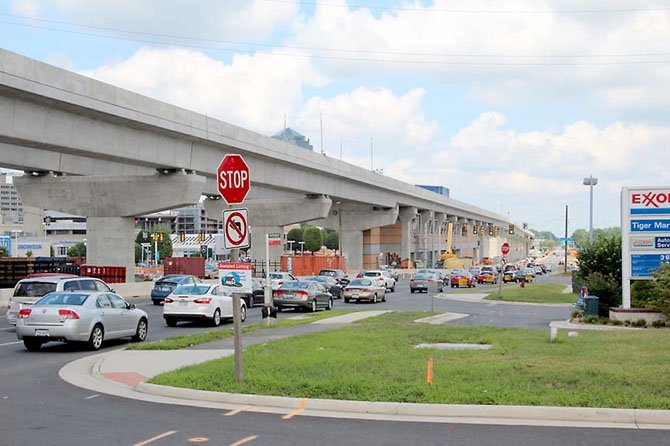To the Editor:
In the history of cities and significant population centers over the millenniums, one aspect has most always held sway in determining their locations, patterns of growth and the ability of commerce and community to thrive—transportation. In its many forms, these modes of transportation include navigable rivers and waterways (the great cities of Europe come to mind), natural sea-going harbors, established land and trade routes, and, in the industrial age, the confluence or terminus of railway lines (think Atlanta). Two notable exceptions have been when settlements were located and founded on strategic, defensible topography (Athens, Greece being a prime example), or when settlements were located adjacent to where large amounts of natural resources had been found.
In the automobile age, this phenomenon has occurred with new and unique twists—witness the growth and development of Tysons Corner. From humble beginnings not long ago, adjacent to the then new Capital Beltway and at the mere crossing of two country roads, Tysons is now the 12th largest employment center in the U.S. A classic example of an “edge city,” Tysons has a nighttime population of 20,000 and a daytime population of over 100,000.
The movers and shakers of this area have high hopes, dreams and plans of remaking Tysons into the urban jewel of Fairfax County and Northern Virginia with an increased nighttime population of 100,000 and a daytime population of over 200,000. Plans have been imagined, drawn, reviewed and re-reviewed. In a case of reverse engineering, thoughtful consideration of transportation to and within this commercial core has come after its formative decades of growth and development and was considered at the inception of the planning for the “new” Tysons. Essential to the vision and realization of a front-of-the-phone-book photograph of a dynamic skyline, major transportation is arriving soon in the form of a four-station Metro extension called the Silver Line that will eventually find its way to Dulles and Loudoun County (although the latter was a close call).
As the plans and vision for the redevelopment of Tysons were taking shape several years ago, a heated debate ensued over whether the metro line and its four stations should be constructed below ground or above. The arguments centered on costs. There appeared to be little to no cross pollination in the “vision” aspect of the planning of the “new” Tysons and the implications of having an elevated divider through its heart.
Now most of the concrete has been poured, the tracks have been almost fully laid, the stations are taking shape, and there it is—an ugly monstrosity of staggering imagination. The “Great Wall of Tysons!” now looms as one drives along Route 123 and Route 7. The four stations look like what one would imagine a subterranean, New York City subway station would look like if it was magically pushed to the surface for all to see with an aesthetic of infill, “basement” masonry walls between incredibly crude concrete columns. The extensive, elevated track cuts and divides Tysons into unintended districts and will impart an unimagined urban dynamic that will alter and thwart aspects of the plan and vision for the new Tysons.
Another part of the legacy of the many great cities and population centers of the world is that transportation hubs and systems have often been conceived as architectural crown jewels. This area is blessed with three fine examples, one traditional and two modern: Daniel Burnham’s Union Station, Eero Saarinen’s original Dulles Airport Terminal and the spectacular vaulted and coffered Washington Metro stations designed by Chicago architect Harry Weese. Alas, far from carrying on this tradition and being able to add another to that list, now in our community, where visions of progress, promise and glitter abound, we have the “Turkey of Tysons” and we are left only to lament and groan.
Dennis Findley
McLean
Dennis Findley is an architect and in 2010 was a candidate for the U.S. House of Representatives in Virginia’s 10th Congressional District.
